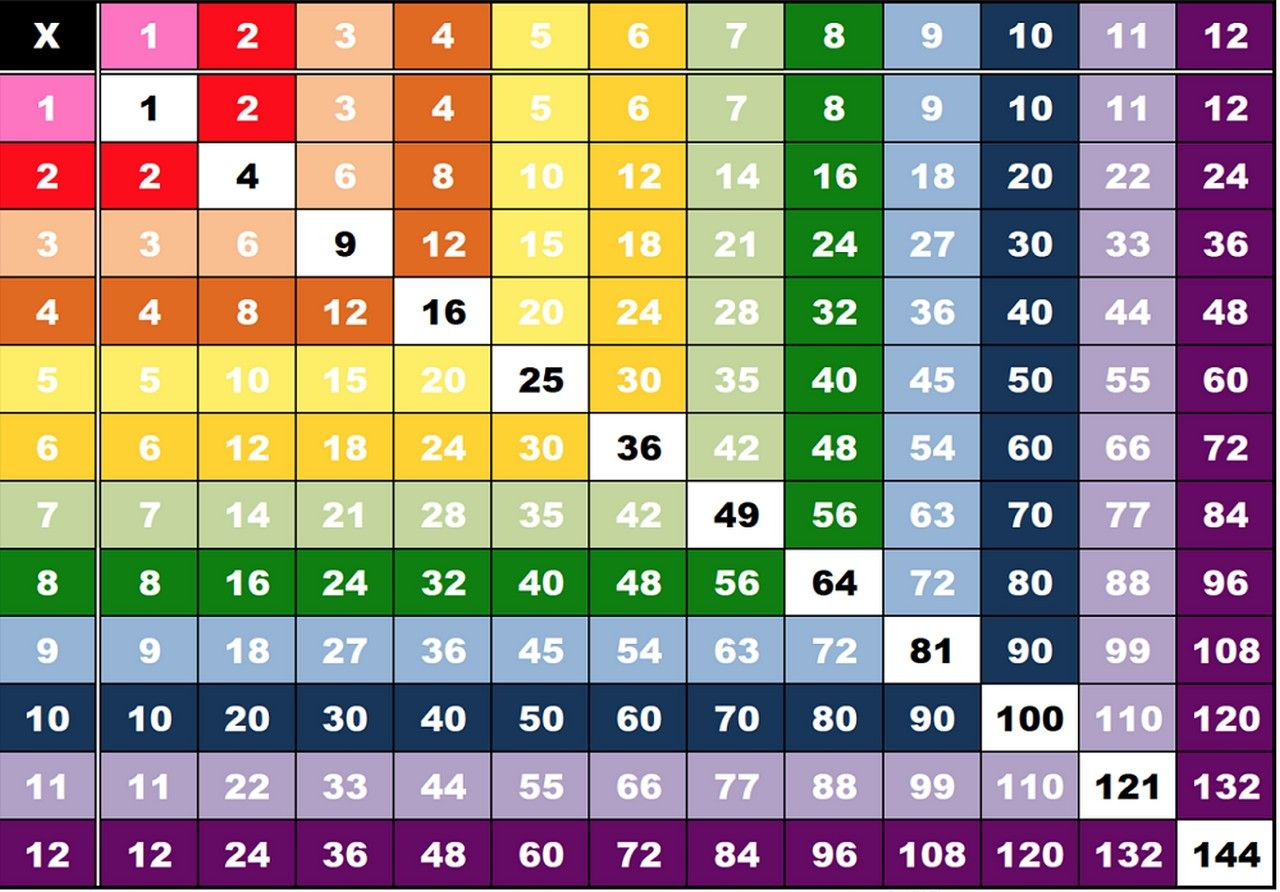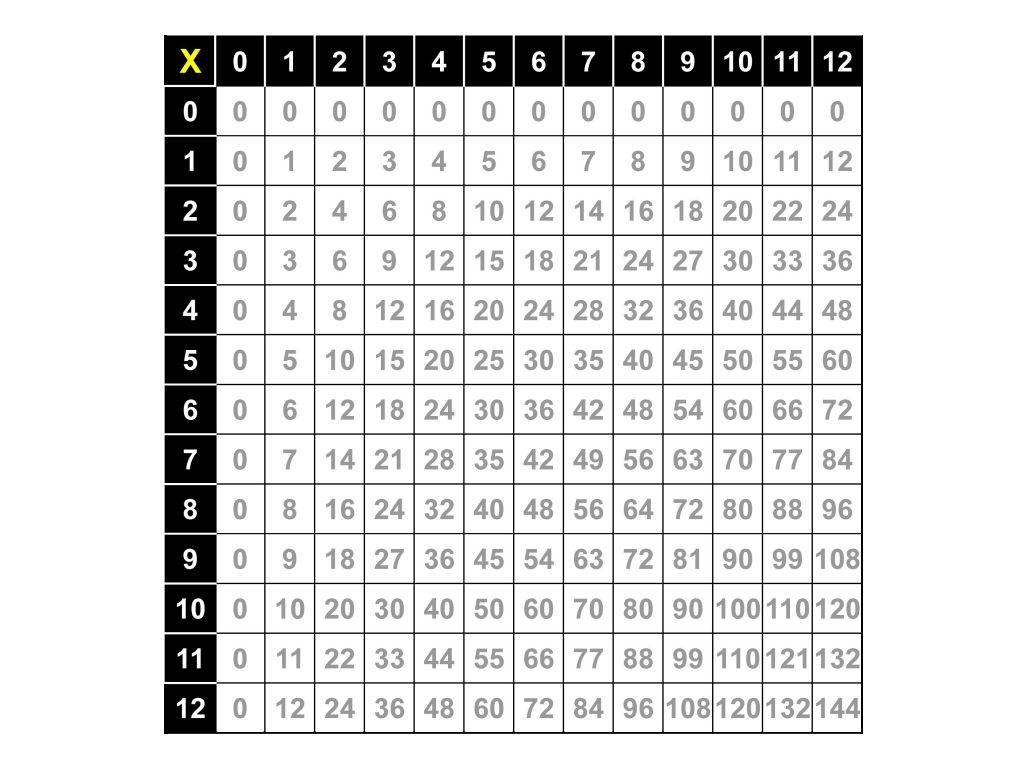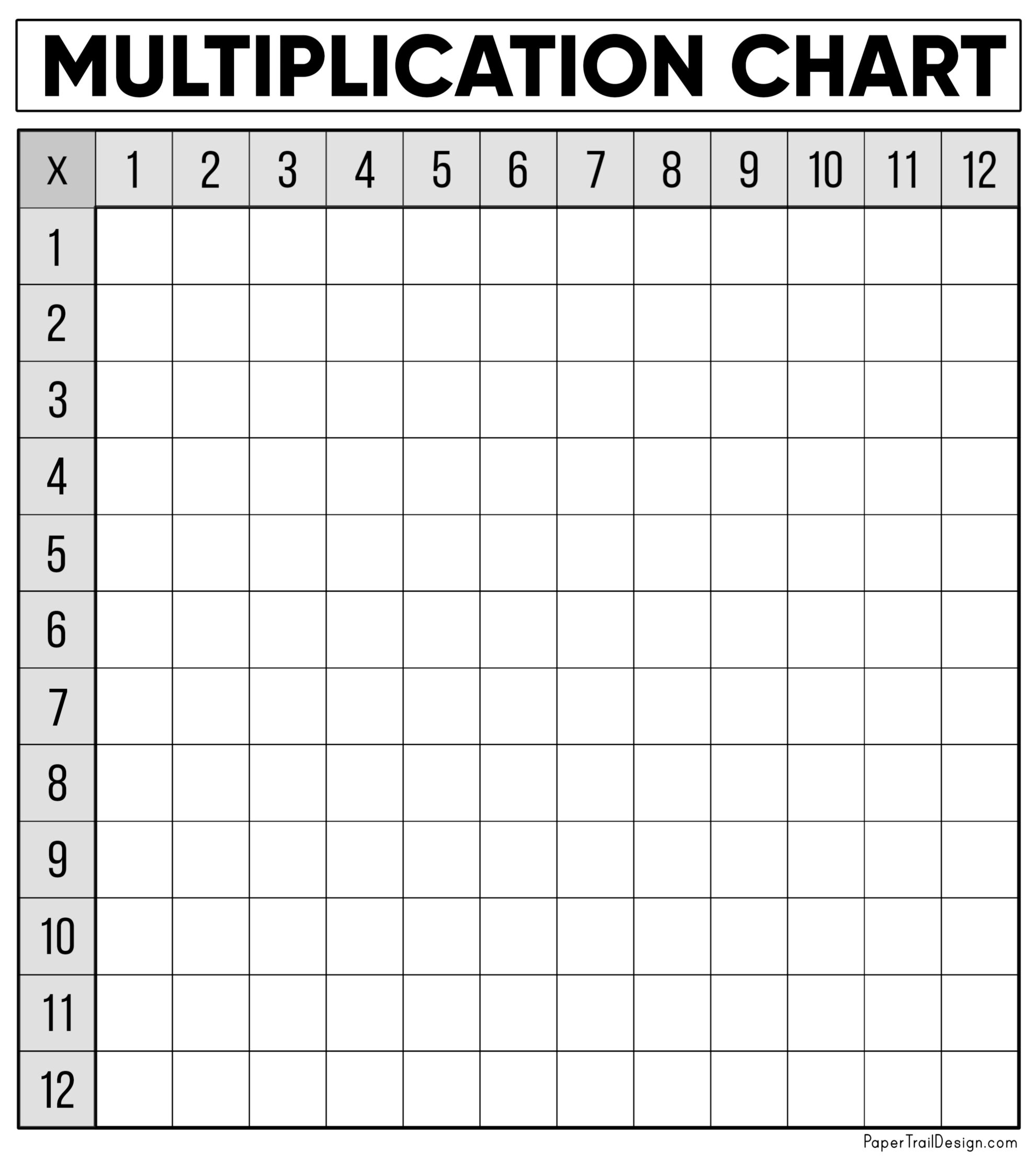

In the era of the British imperial system of measures and “non-decimal” money, everyone needed to count to 12 and use this number in various calculations. And it was a multiplication table up to 12, which is used to this day. It is believed that the multiplication table was first introduced into the school curriculum in England in the late Middle Ages. Why do multiplication charts only go to 12? That’s how easy it is! Now try to practice it by yourself. and one vertical line from the cell with digit 4 in the top row.one horizontal line from the cell containing digit 3 in the far left column.The product of multiplication of two digits is the number at the intersection of the row and the column with the corresponding digits.įor example, to multiply 3 by 4, you can draw two lines with a marker or just mentally: Just instead of summing numbers, you multiply them. If you have ever used the addition table, you can skip this part as it is practically the same. The cells or the boxes of the table contain their product. The numbers we use are located in the left column and the top row - these are the numbers we multiply they are called multipliers. It consists of columns and rows where each number from 1 to 12 has one row and one column. To make it easier to do our day-to-day calculations and remember some of them faster, we use a multiplication chart.Ī multiplication chart is a table that shows the result of the multiplication of two numbers. What is the multiplication chart, and how do you use it?

That’s why if you had eaten one sweet from one of those boxes, we would not have been able to include that box in our counting. When we meet a situation where the same number is repeated several times, and we need to figure out the total amount, we can use multiplication. So, the main conclusion is that multiplication is just repeated addition. So what we can do is to multiply 10 sweets by 6 boxes: But let’s think nobody around is that sweet tooth, and each box contains exactly 10 pieces. In our case, we have 6 groups of 10 chocolate sweets, unless someone has snuck in and secretly eaten a couple of pieces. This way, it is clearer to kids why we need to use multiplication and what happens during it. In a way, multiplication is a special way of adding: adding groups of numbers to each other. Because in reality, when we multiply, we add groups of numbers together. Instead of saying ‘times’, as we are used to, it is more helpful to say ‘groups of’. Instead, you can take them in groups and see how many of the groups you have. How messy and inconvenient is that! And also tempting - it is much more fun to eat those sweets than count them for so long. How do you know how much you have altogether? If you start counting them by adding one to another first, you will have to remove them from the boxes and sum them up individually. Imagine you have six boxes of chocolates, each containing 10 chocolate sweets. When we have big groups of things, it will take us twice as much time to add them together instead of multiplying. It makes our calculations faster and more accurate. Multiplication is a magical arithmetic action. A kid will get that pretty quickly as well once he gets to the bottom of it. You will see it is harder not to use multiplication than to use it. Next time you are in a supermarket, try not to use multiplication and use addition instead. Many of our everyday activities require that we can multiply both simple and more complex numbers. If you think about it, multiplication actually makes our calculations faster and easier. You'll have the whole table memorized in no time.After a kid masters counting and addition, it is time to move to the next level and learn multiplication. When you've memorized one row, move on to the next one. 2 x 3 = 6." And so on, to the end of the row: "2 x 12 = 24." Move your finger across from the 2 and say to yourself (if it helps), "2 x 0 = 0. Pick a row or column and learn that one all on its own.
#12 multiplication chart full
Trying to memorize a big square full of numbers at once is too tough for most of us. If you need to memorize the table for school, take it one row at a time. Follow the yellow arrow down from 7 and across from 6. So you find 7 in the top row and 6 on the left side.


Where the two meet is the answer.Ĭheck out the example above. Draw your finger down from the top number and across from the left number. You can choose any number across the top, 0 through 12, and any number along the left side, also 0 through 12. It's a grid of numbers that can help you learn to multiply quickly either using the table or, eventually, in your head. A chart like the one above is called a multiplication table or times table.


 0 kommentar(er)
0 kommentar(er)
